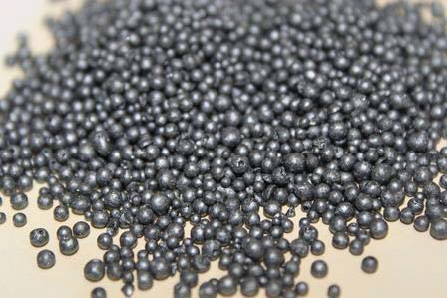The project, through the development of the iodine Fed Advanced Cusp field Thruster (iFACT) subsystem, will focused on:
- Iodine as disruptive propellant for electric thruster
- Maturation of the Advanced Cusp Field Thruster (ACFT) as disruptive thruster principle, in three different power classes
- Significant reduction and simplification of the PPU
- Calcium aluminate (C12A7) as disruptive, iodine-resistant low-work function emitter material for cathodes
Iodine as propellant can lead to a significant simplification of the propellant feeding subsystem architecture which enables a significant cost reduction. It further allows decreasing the mass of the feeding subsystem because of its high storage density (three times higher than xenon) and the fact that xenon is pressurized to 180 bar. Pure iodine (99.99%) pellets are easily available off the shelf for less than 100 € per kilogram. Thus, iodine offers significant propellant cost savings compared to xenon (>1000 € per kg).

iFACT aimed to increase the knowledge on the compatibility of the iodine propellant with test facilities and diagnostics so as to optimise tools, equipment and test procedures for the new propellant. The project designed and validated an independent testing infrastructure allowing long firing sequences with special emphasis on the safety procedures and measures to protect the environment. The information gathered in iFACT, and in particular the results coming from the facilities characterisation, are essential for the future European industrial programs on this type of technology.
The Advanced Cusp Field Thruster (ACFT), invented by Airbus in 2017, is a thruster which already runs perfectly on iodine. It features a simple concept that:
- Is simple to ignite, on the application of propellant flow and anode voltage to the thruster, without the need for special procedures, even at cold temperatures
- Has a wide operational range
- Has a magnetically shielded discharge chamber, with no erosional lifetime limit known
- Is highly throttleable
- Has a wide anode voltage operational range that allows optimising either for low Power To Thrust Ratio (low voltage) or high specific impulse operation (high voltage) depending on the targeted application
- Has a stable DC-Plasma discharge which leads to minimal electromagnetic noise and low electromagnetic interference

It is feasible to operate the thruster with an extremely simple Power Processing Unit that:
- is built out of exiting space qualified radiation hardened parts
- has a low number of parts which leads to high-cost efficiency
iFACT intended to examine developing variations of EP subsystems besides the main 300 W version. In this context, a 10 W subsystem will be experimentally validated enabling the fast and cost-efficient demonstration of key technologies. Furthermore, a 1000W iFACT upscaled laboratory model was tested in addition to the other development lines.
So far, all ACFTs tested have been operated with thermionic cathodes as neutraliser (non-hollow cathode neutralisers, without gas supply to the neutraliser have been used). This was in particular possible because of the comparably low input power (< 300 W) used. However, thermionic neutralisation requires a high amount of heating power with state of the art materials such as Lanthanum hexaboride (LaB6). To further improve the subsystem efficiency, a material with lower work function is required. A promising alterative is calcium aluminate (C12A7), which:
- has a theoretical very low work function of 2.6 eV
- is insensitive to poisoning with iodine
Moreover, in case of thrusters, which higher input power such as the future 1000 W iFACT, a hollow cathode becomes necessary for neutralisation, due to the high emission current required. C12A7 can also be used as iodine compatible emitter in these devices.
Accordingly, the project developed a hollow cathode, which operates with iodine in order to ensure that “high power” thrusters can use iodine as a propellant. iFACT developed C12A7 as an emitter material both for the hollow cathode and as thermionic emitter.
Image credits: Fraunhofer IKTS
